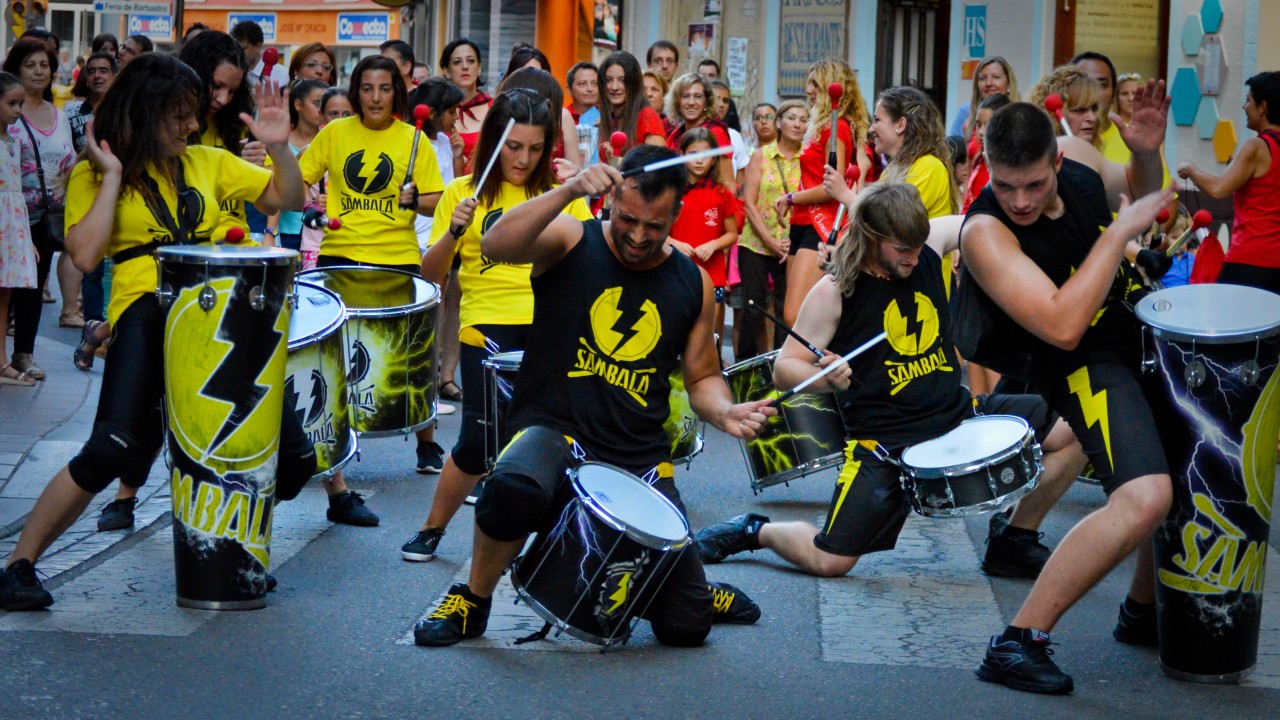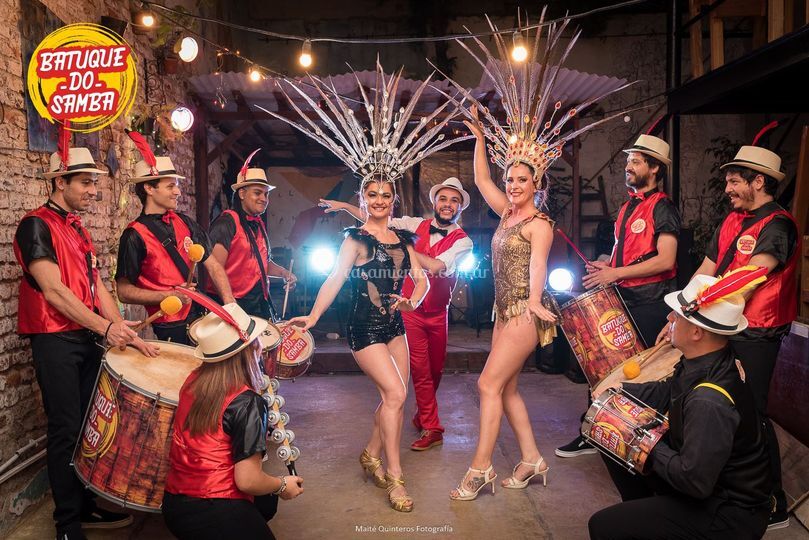

It’s worn at an angle on the body, suspended from a drum strap, and played with two wooden drumsticks, using the traditional grip. The caixa, or snare drum, is a 12″ drum with guitar strings (the snare) stretched across the top to enhance the sound. The timbau’s also quite an unwieldy instrument to play while parading, so if you’re not too tall, make sure you choose a short one! Caixa (snare drum) The various slaps, hits and tones produced on the timbau can be tricky to get the hang of, and are specific to Brazilian percussion (with some similarities to African hand drums, djembe and conga drums). It’s worn in front of the body using a harness-like drum strap and looks something like a conga drum. The timbau is a tall hand drum, played using both hands in various positions to create different sounds. It’s a heck of a workout for your upper body! Timbau

Chocalho players need to be pretty fit, with heaps of stamina, especially in their arms. This instrument provides some of the firepower within the band, producing a continuous high-pitched metallic sound that matches very closely with the pattern of the caixas. It is played by holding the handles in both hands and shaking the instrument to and fro, following various different patterns and rhythms. The chocalho, or shaker, is a flat metal or wooden frame filled with pairs of jingles, with a handle at either side. They share “show pony” status with the tams in the front row. Technically straightforward to play, the agogo nonetheless requires a great sense of timing, as its patterns are sometimes played off the beat, or off the “one”. They also sometimes take it in turns to play, in a call and response format. The agogos and tams, producing the two most high-pitched sounds in the band, will generally either be playing the main rhythm, or providing a counterpoint to this. The agogo is a U-shaped metal rod with an open bell at either end, which is held in one hand and played using a wooden stick. Tams and agogos are the most visible instruments as they share the front row, hence their unofficial Wellington Batucada title of “show ponies”. It’s played at high speed and provides a high-pitched accent pattern, often complementing or counterpointing the agogos. The tamborim is one of the more technically challenging instruments, and is tricky to master.

It looks a bit like a tambourine without the jingles. The tamborim is a small 6″ drum held in one hand and played using a plastic multi-stranded stick while rapidly twisting the drum to change its position. Click on any image to see a larger version: Tamborim In Wellington Batucada we play nine different percussion instruments. Performing Funkanui, Sevens Waterfont Parade 2015 – video by Fernando Maluf Our instruments


 0 kommentar(er)
0 kommentar(er)
